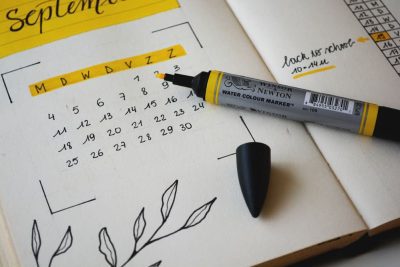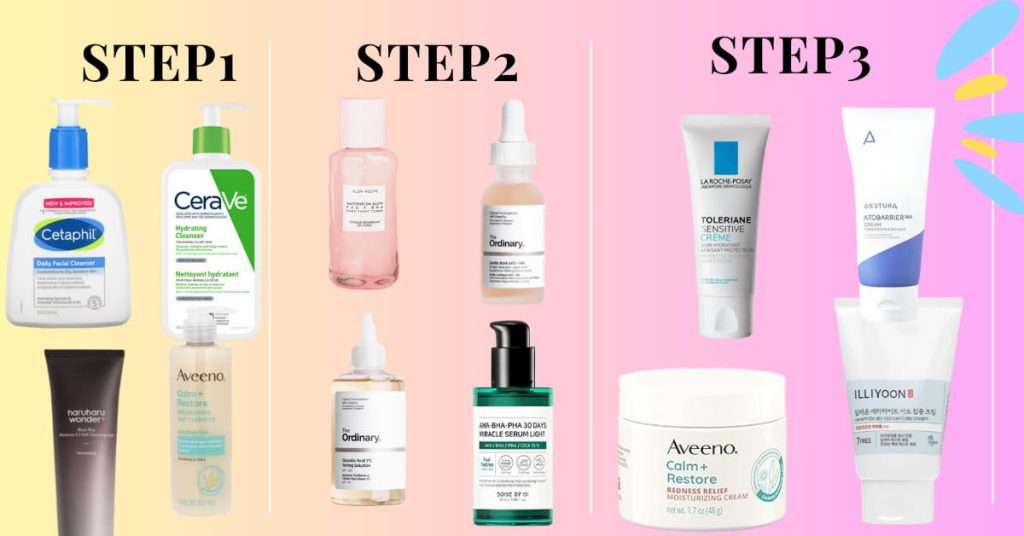Keeping up with the latest trends and routines can be overwhelming in the skincare world. One such trend that has caught the attention of many skincare enthusiasts is skin cycling.
If you haven’t heard of it yet, don’t worry—we’re here to explain it to you. We’ll walk through what skin cycling is and give an example of skin cycling routine products for different skin concerns.
What Is Skin Cycling and How Does It Work?
Skin cycling is a methodical approach to skincare that aims to optimize the effectiveness of your routine while minimizing irritation and damage to the skin barrier. It involves nightly rotating between specific steps and active ingredients to ensure a balanced and rejuvenated complexion.
Some people do skin cycling in the morning, and the reason is that they want to rotate skincare ingredients without mixing Vitamin C and copper peptides that don’t work in the same routine.

Photo by Estée Janssens on Unsplash
The basic anti-aging skin cycling routine revolves around four key steps:
- Exfoliation: On night one, incorporate an exfoliant into your routine to slough away dead skin cells and unclog pores. This step helps to promote cell turnover and improve the overall texture of your skin.
- Retinoid Treatment: Night two is dedicated to using retinoids, a powerhouse ingredient known for its anti-aging and acne-fighting properties. Retinoids stimulate collagen production, reduce fine lines and wrinkles, and even out skin tone.
- Recovery: On night three, skip the active ingredients and focus solely on moisturizing and nourishing your skin. This step allows your skin to replenish moisture levels and repair any damage caused by exfoliation and retinoid use.
By following this simple yet effective skin cycling routine, you can strike a balance between addressing specific skincare concerns and giving your skin the downtime it needs to thrive. This gentle approach helps to soothe and calm the skin, ensuring it remains healthy and resilient, and, at the same time, uses active ingredients that target specific skin concerns.
How do You Adopt Skin Cycling for Your Skin Needs?
While skin cycling offers numerous benefits, it may not suit everyone. Individuals with sensitive skin or those prone to irritation may find this routine particularly beneficial, as it allows for targeted treatment without overloading the skin with active ingredients.
However, it’s essential to listen to your skin and adjust the routine accordingly based on your unique needs and preferences. Whether you choose to adopt skin cycling or stick to your existing routine, the key is to prioritize consistency and moderation to achieve optimal skin health.
I’ve witnessed firsthand the transformative power of skin cycling with me and the people I suggested it. While the method given above serves as a solid foundation, I encourage you to personalize your skin cycling routines based on your unique skin types and concerns.
How to do that:
- Add more rest days when needed. You can let your skin rest not for one day but for two. Alternatively, if the skin feels tough/irritated after exfoliation, you can add the rest day in between exfoliating and retinoid day.
- If you don’t use retinoids, you can find benefits in skin cycling morning routine.
- Depending on how much time you use retinoids, you might need to use it more often than once in 4 days (if there’s one day of exfoliation and then two days of rest follow).
- Not everyone needs a dedicated exfoliation night – e.g. if you exfoliate with a toner in the morning, or use a Salicylic acid cleanser, you don’t have to rest from retinoid.
- To treat hyperpigmentation, rotate between those products that treat it and can’t be used together.
- Some treatments, like anti-acne, shall have fewer breaks between using anti-acne ingredients.
Skin cycling products (PM)
1 Anti-aging routine (exfoliation+retinoid) steps + Skin cycling product list
Night 1: exfoliation.
- Wash your face. If you double cleanse, or wear waterproof SPF or makeup, use your oil-based face wash. Then use a mild face wash (svoid Salicylic acid cleansers as they also exfoliate). A mild face wash is enough if none of the abovementioned is relevant. Examples: Cetaphil Daily Facial Cleanser, CeraVe Hydrating or Foaming Facial Cleanser, Haruharu Wonder Black Rice Moisture 5.5 Soft Cleansing Gel, Aveeno Calm + Restore Nourishing Oat Face Cleanser.
- Exfoliate. Use an acidic solution suitable for your skin type. If you’re used to acids, you can use use AHA, BHA, PHA 30 Days Miracle Serum by Some By Me or its gentle version, or Glycolic Acid toner by The Ordinary, Glow Recipe Watermelon Glow PHA+BHA Pore-Tight Toner. If you’re not used to acids yet, try acids beter suitable for sensitive skin like Lactic or Mandelic Acid serums by The Ordinary, or BHA toner by Paula’s Choice.
- Moisturize. Depending on your skin type, choose preferably a ceramide moisturizer that works on protecting and repairing your skin barrier. Examples are ILLIYOON – Ceramide Ato Concentrate Cream or Gel for oily skin, AESTURA – Ato Barrier 365 Cream/Gel, Aveeno Calm + restore cream/gel, La Roche-Posay Toleriane Sensitive cream. Tend to choose ceramide moisturizers as they’re good for our skin.
In the morning after exfoliation, don’t forget your sunscreen. Looking for the perfect sunscreen for oily skin? Look into the Best Sunscreen for Oily Skin, The Best Tinted Sunscreen. Or read about my favourite sunscreen in.
Some of the brands mentioned originated from South Korea and are famous for their innovations in skincare: HaruHaru Wonder, Some By Me, Aestura, and Illyoon. You can easily purchase them from YesStyle; it is a trusted site that regularly has discounts. For even more discounts, use the reward code VZBZKB. They deliver worldwide.

Night 2: Retinoid.
- Wash your face. The cleanser might be the same one you use on the exfoliation night.
- Use Retinoid. On the dry skin (after it completely sried from washing or another products) skin, you can use retinoid of your choice or the one that is prescribed to you. For beginners, you can use a mild retinoid serum.
- Moisturize. Depending on your skin type, choose the moisturizer that is working on protecting and repairing your skin barrier. As as well after the exfoliation, the skin needs some help after using retinoids.
In addition to retinoid, you can add peptides serum or some serum with niacinamide (though not exfoliating one), as niacinamide will help to tolerate retinoid (read more in niacinamide in skincare)
Night 3: Rest.
Wash your face and use your regular moisturizer.
Final Thoughts
Skin cycling has emerged as a promising approach to achieving radiant and rejuvenated skin in the ever-evolving landscape of skincare. By incorporating gentle exfoliation, potent retinoids, and dedicated recovery phases into your routine, you can unlock the full potential of your skincare regimen.
Remember, skincare is not one-size-fits-all, so feel free to tailor the skin cycling routine to suit your individual needs and preferences. With patience, diligence, and a touch of experimentation, you can embark on a journey towards healthier, happier skin.
Thank you for joining us on this exploration of skin cycling. If you found this guide helpful, don’t forget to like, comment, and subscribe for more skincare tips and insights.
Take care, and happy cycling!
You might also be interested in:
How do you get glowing skin for a special occasion? Read in the Pre-event Skincare
Are you a man or looking for tips for your husband/son/any other man you care about? Read the Men’s Skincare Routine